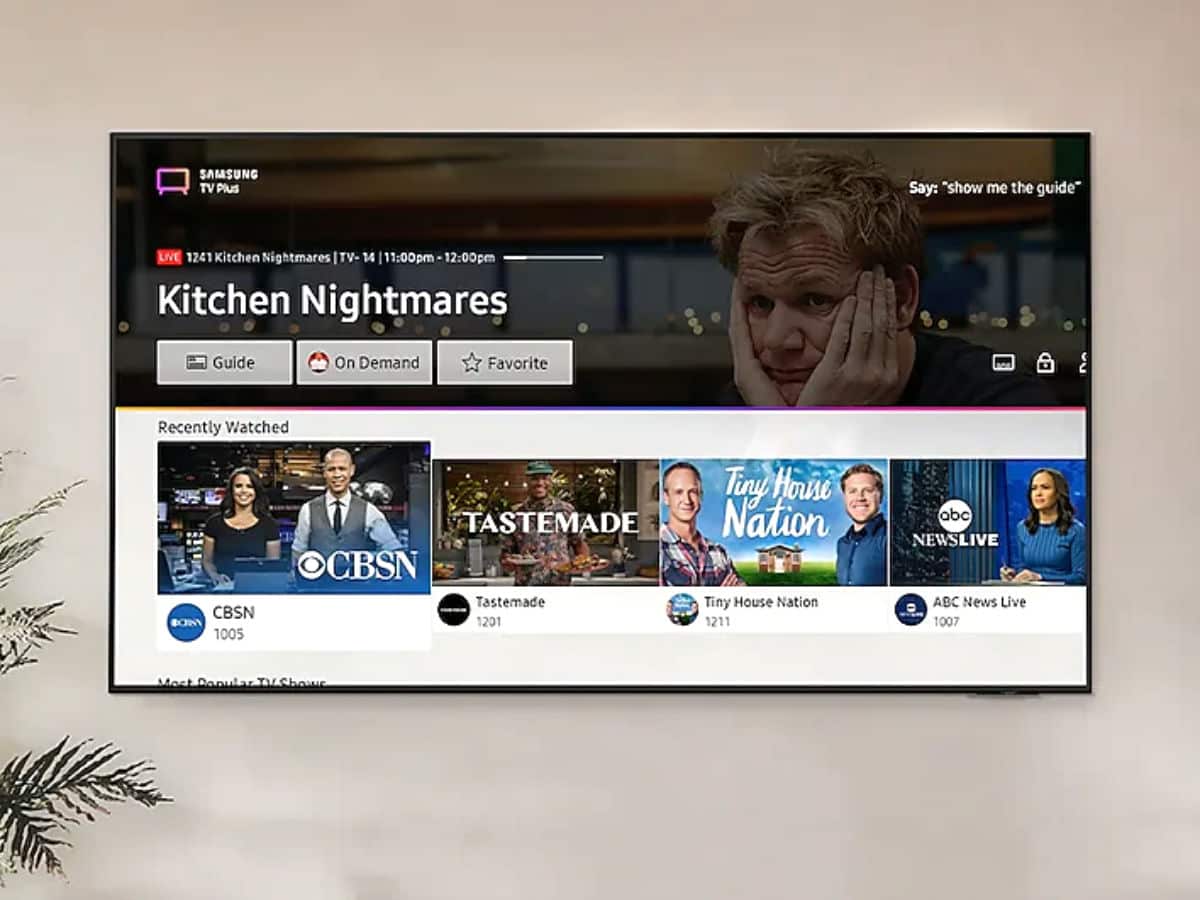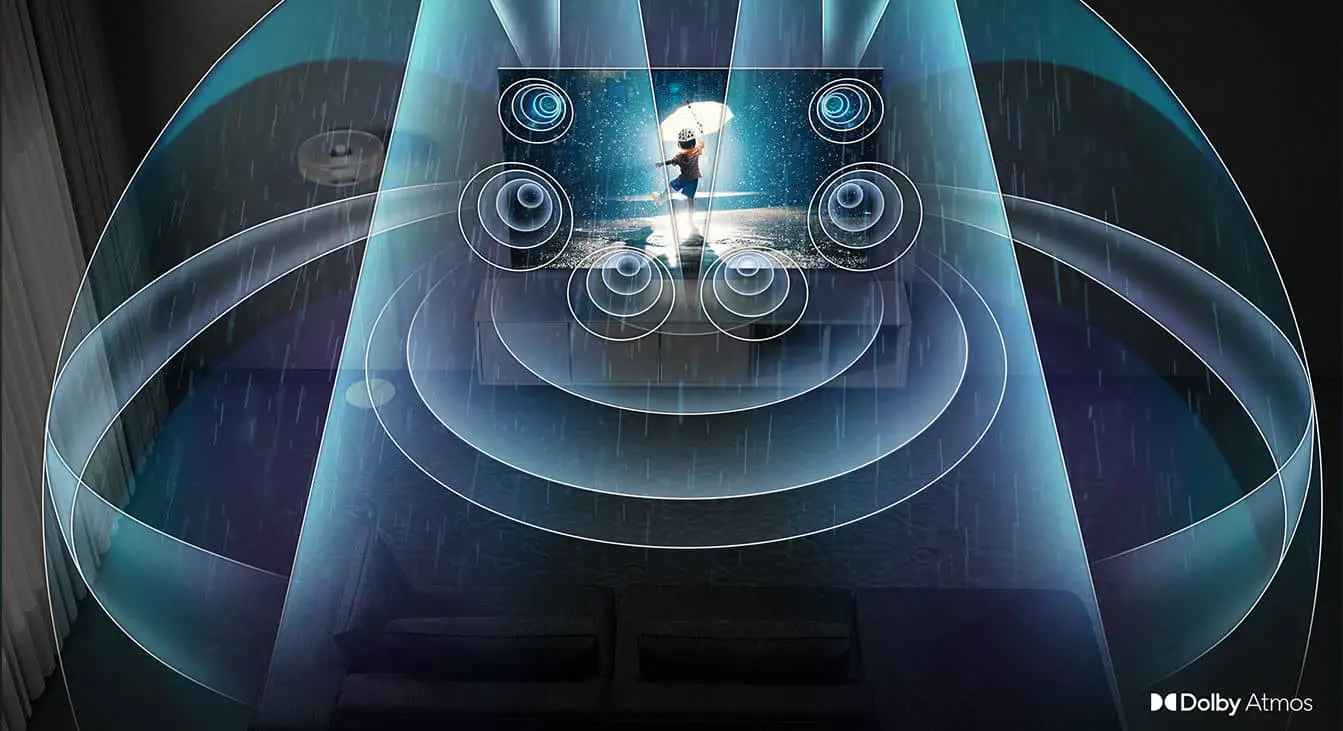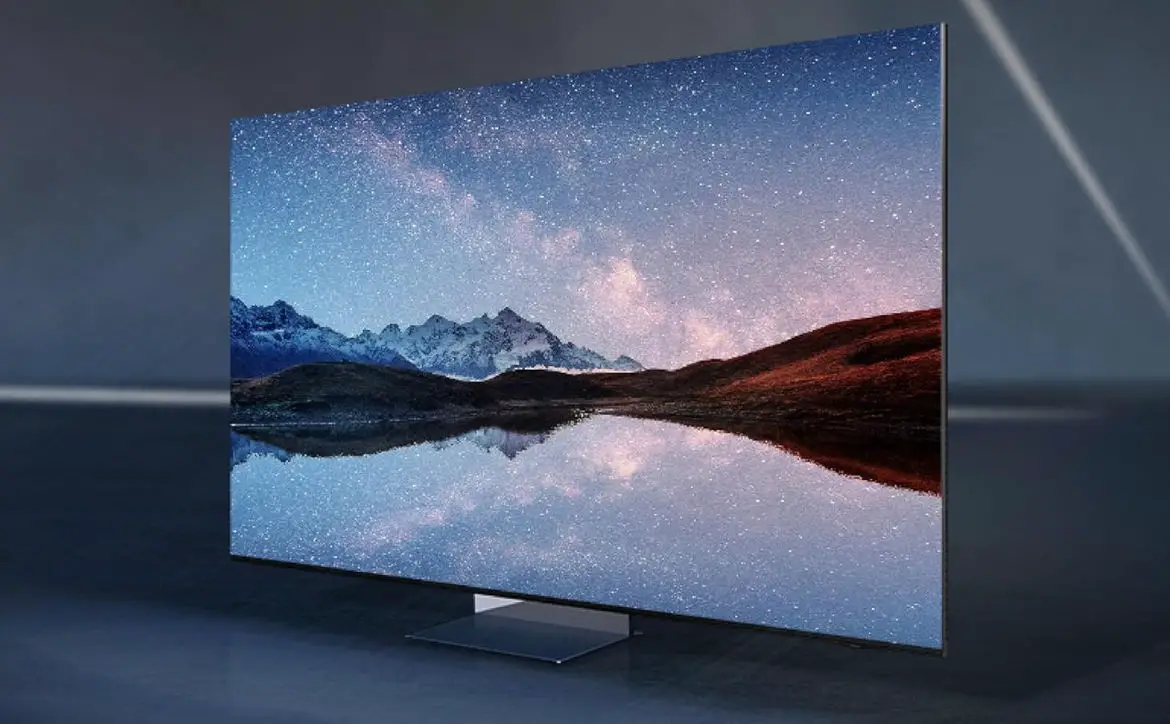
I’ve done my fair share of Samsung TV reviews, and generally, the company sends out their flagship TVs which can cost a pretty penny. So I’ve asked them to send me other models that are a little more affordable than the big boys. The 2022 65″ 4K Samsung Q80B QLED TV sits in the midrange area, and while not cheap, it’s also very accessible in terms of pricing.
I think Samsung’s flagship TVs are excellent. Their Neo-QLED technology combined with 4K and 8K resolutions is a marvel to behold. But if you’re still looking for excellence but don’t want to pay the price. Samsung’s midrange and budget options are still excellent for their class. The US$1,499 2022 65″ 4K Samsung Q80B QLED TV holds all of Samsung’s excellence at a smaller, more attainable price. We would consider this model to be more in the mid-tier range for Samsung, and we have reviewed the more budget-friendly Q60A, which is excellent for the price, but this Q80B is better and also earns a Top Pick from us. It is worth buying over something like the Q60A if you can pay the extra dollars.
Table of contents
Specifications
The 2022 65″ 4K Samsung Q80B QLED TV has the following specifications and features:
- Video
- Screen Size: 65″
- Resolution: 3840 x 2160
- Refresh Rate: 120Hz
- Color: 100% Color Volume with Quantum Dot
- HDR (High-Dynamic Range): Certified(HDR10+ Adaptive & HDR10+ GAMING)
- Picture Engine: Quantum Processor 4K
- Upscaling: AI
- Audio
- Dolby: MS12 5.1ch
- Sound Output (RMS): 60w
- Speaker Type: 2.2.2CH
- Dolby Decoder: 5.1
- Multiroom Link: Yes
- Bluetooth Headset Support: Yes
- Wireless Connectivity
- WiFi: WiFi5
- WiFi Direct: Yes
- Bluetooth: Yes (BT5.2)
- Features
- Smart Hub: Yes
- Processor: Quantum Processor 4K
- Apps Platform: Yes (Tizen)
- Voice Interaction: Yes
- Auto Channel Search: Yes
- Auto Motion Plus: Yes
- Dimming Technology: Micro Dimming (Supreme UHD Dimming)
- V-Chip: Yes
- Electronic Program Guide (Channel Guide): Yes
- Game Mode: Yes
- Ambient Mode+: Yes
- Auto Power Off: Yes
- Closed Captioning: Yes
- Anynet+ HDMI-CEC: Yes
- Eco Sensor: Yes
- Bluetooth: Yes
- Mobile to TV – Mirroring, DLNA: Yes
- INPUT/OUTPUT
- HDMI (4) one with eARC
- USB 2.0 (2)
- Optical Out (1)
- Ethernet
- RF In
- Dimensions
- Product Size (W x H x D) Without Stand in inches: 56.9″ x x 32.7″ x 2.2″
- Product Size (W x H x D) With Stand in inches: 56.9″ x 35.7″ x 11.4″
- Stand Size (W x H xD) in inches: 15.4″ x 9.2″ x 11.4″
- Shipping Size: 63.8″ x 38″ x 8.4″
- Weight without stand: 53.1
- Weight with stand: 61.3
- Shipping weight in the box: 80.9 lb.
- Power
- Power Supply: AC110-120V 50/60Hz
- Samsung remote: SolarCell Remote TM2280E
- Model Number: QN65Q80BAFXZA
What’s In The Box

- 2022 65″ 4K Samsung Q80B QLED TV
- Power cable
- Manuals, documentation, warranty
- Hardware and stand
- Samsung SolarCell remote TM2280E
Design

In terms of aesthetics, these days, I do not see many significant differences between Samsung’s price ranges. Their flagship Neo-QLEDs on the high end of the price scale have influential design cues, but TVs in the mid-range to the high end of the budget range all have very similar aesthetics.
The TV comes well packed and protected, and our unit was in perfect condition. The shipping weight in the box is around 81 lbs, and the TV itself weighs in at 53 lbs, 62 lbs with the stand. The TV is wall-mountable via the VESA option, not included. The Samsung Q80B is heavier than some of the more budget options due to the inclusion of a better and more robust stand. TVs like the Q60A come with basic leg stands, while this stand is solid metal, more prominent, and gives me more confidence in its ability to hold the TV.
The back of the Samsung Q80B is made of plastic and looks relatively plain but well made with quality materials. The inputs on the back are recessed, making it easier to wall mount the TV. A significant difference between this and cheaper models is that all of the inputs are recessed; the Q60A had a few ports flush which could potentially interfere with wall mounting; this is not the case with the Samsung Q80B.
The stand is metal, sits in the middle of the TV, and is wide and stable. It’s a heavy monster, but I love it because it offers much support. Also, because it is a center-mounted stand, it allows you to use smaller TV stands that may not fit stands placed at the ends of the TV. Such as the legs on the Q60A.
The front of the Samsung Q80B is clean and has slim bezels. Slim and thin bezels are no longer the domain of more expensive TVs. Even Samsung’s more budget-friendly TVs are getting the thin bezel treatment. There is still a differentiator in Samsung flagships as those bezels are almost nonexistent. But if you’ve not experienced the high-end Neo-QLED lineup, you will be more than impressed with the bezels and display on the Q80B.
Samsung deserves praise for its new SolarCell remote, and the one included with the Samsung Q80B is a more recent version, model TM2280E. The layout of the remote remains the same as in previous versions. The SolarCell remote uses no batteries, is powered through a solar panel on the back, and includes a USB-C charging port. The solar panel can use indoor lighting to charge and also uses sunlight. If, for some reason, you leave it in the dark for too long, you can always charge it with the USB-C port, and that doesn’t take long.
The Samsung Q80B design sticks with what is working for Samsung for now. That’s not a bad thing. The Q80B looks much more expensive than it is. The SolarCell remote is one of the highlights in the design, and it seems the company will include these with all of its TVs.
Display

4K displays are now the norm. Even lower-end Samsung TVs have 4K displays. But, not all 4K displays are created equal. There are some differences, such as the backlighting array and the color science implemented in the TV. There is also the cost of the hardware to consider. TVs that cost fewer use components capable of 4K but aren’t always the highest quality. The difference is noticeable between the lower-priced Q60A and this higher-priced Samsung Q80B.
I will concede that if you’re not looking at a wide variety of TV displays every year, as I am, you probably won’t see much of a difference. But believe me, there is a difference. But the fact remains that 4K is the norm, and you will see 1080p panels phasing out quickly.
That being said, this panel is Samsung’s QLED technology Direct Full Array. Less light leakage makes way for details to reveal themselves, while the focused backlights deliver contrast that pushes the scene out toward the viewer. The Samsung Q80B isn’t the same panel technology as its more prominent and expensive brothers, but it is an upgrade from the budget line and worth the few extra hundred dollars.
Like most anything, the picture quality will be subjective. There will be fanboys of QLED, while there are an equal number, if not more, haters of Samsung’s QLED technology. I’ve had nothing but good experiences with QLED panels, and the Samsung Q80B did not disappoint.
The Q80B is still lagging behind something like the QN800A, but that’s expected, given the tech and price differences. Placing the Q80B next to the Q60A and playing duplicate footage on each, you can see a difference in clarity, contrast, and color. Moreover, the Q80B blows away budget TVs like some sold by Vizio, TCL, and even its budget models.

The black levels are much more profound than what you see on the Q60A yet still not as impressive as the flagship Neo-QLED TVs. Some OLED TVs may have better blacks, but Samsung is closing that gap quickly. Quantum HDR is one way Samsung has been able to accomplish deeper blacks. With Quantum HDR on the Samsung Q80B, you can experience the contrast and brilliance that brings details to what seems right in your living room.
Colors are everything we’ve come to expect from Samsung, vibrant, yet you can pull it back to a more neutral color palette if you dive into picture settings. Filmmaker Mode and other preset modes allow you to choose how you view your content.
Samsung has also incorporated Smart Calibration into the Samsung Q80B. This allows you to use the camera on your smartphone to calibrate the display. Most of the time, I have found the calibration acceptable, but this option will enable you to change quickly within 7 to 12 minutes.
Overall, the Samsung Q80B display is a cut above its more budget-focused TVs and sits right under the company’s flagship models. It’s bright, has excellent black levels, vivid color, no blooming or light bleed, and no signs of burn-in.
Setup
Setup is a breeze and can be done via the SolarCell remote or smartphone with the Samsung SmartThings app. SmartThings works on iOS and Android but seems more seamless on an actual Samsung mobile phone. Go figure. When you push the power button on the remote, the remote will pair with the TV, and you’re ready to follow the on-screen instructions.
The setup is pretty basic and standard. I recommend signing up for a Samsung account and linking your TV to your account. It makes some things more accessible, but it’s not necessary. Once you complete the setup, downloading your favorite streaming apps and logging into them is just a matter of downloading them. If you have a Samsung account and are replacing a Samsung TV, you could restore the new TV from a backup of your previous TV.
Overall, the setup is straightforward, and Samsung even walks you through it step by step.
Software
The Samsung Q80B is also chocked full of features that you can appreciate. You’ll still find goodies like Ambient Mode, Ultrawide GameView, Game Bar, Object Tracking Sound, Real Depth Enhancer, and Dolby Atmos.
Ambient Mode is the same as it has been and allows you to leave your TV on and display artwork, photos, and other goodies. The TV goes into a low power state and dimly displays your ambient content just enough to see it.
GameView and Game Bar are especially useful for gamers. You can expand your view with multiple aspect ratios from 21:9 to 32:9 with Super Ultrawide GameView. Quickly optimize game settings with an on-screen menu that lets you check input lag, FPS, HDR, wireless headset settings, and more through an easy-to-access game bar.
Object Tracking Sound adjusts the audio to follow the movement of your content, while Dolby Atmos envelops you in cinematic surround sound—all from speakers behind the screen. Real Depth Enhancer, experience depth, and dimension on-screen on the Q80B. Ideal for nature shows and other real-life programs, Real Depth Enhancer mirrors how the human eye processes depth by increasing foreground contrast.

EyeComfort mode adapts the picture according to the time of day and blocks out blue light that could affect your sleep. With the Universal Guide, you can find your favorite movies and TV shows all in one place, with a simple on-screen guide that provides tailored recommendations for exploring new content. You also get Samsung TV Plus, which has been growing year over year and is free on your Samsung TV. It offers some great and fun content for just about everyone.
You also have Samsung Health which offers tons of free exercise content to keep you moving at home. And you can also set up Bixby, Alexa, or Google Assistant if you should like using a digital assistant. With these, you can control the TV with your voice.
The Samsung Q80B also comes with multi-view, which allows you to connect your smartphone to the TV and have an instance of it running there while you watch TV. I’ve never understood the need to do this, but I suppose there are some people would want to.
Gaming Hub is new this year. Gaming Hub allows you to play Xbox Cloud Gaming games, Stadia Games, and several others without needing a console. It’s a nice feature, and you can pair your Xbox remote to the TV to play games.
Finally, Smart Hub keeps getting better and more responsive. Samsung’s Smart Hub is easy to navigate, and every app you need is available. So this makes it, so you don’t need another streaming device. Of course, if you want to use something else, not Samsung’s Smart Hub, you can plug it in via HDMI.
Overall, the Samsung software is generally the same as it has been with some improvements and additions. Smart Hub did get a redesign, and GameHub is now a part of the experience. Samsung’s interface is one of the best out there.
Sound Quality

The sound quality on this level of Samsung TV is vastly improved over something like the Q60A. The Samsung Q80B gives you Object Tracking Sound, SpaceFit, and Q-Symphony sound.
- Object Tracking Sound: Enjoy rich 3D sound that moves with the action happening on screen. Object Tracking Sound adjusts the audio to follow the movement, while Dolby Atmos envelops you in cinematic surround sound—from strategically placed speakers behind the screen.
- SpaceFit Sound: Experience sound designed for your space with SpaceFit Sound. Big or small, long or wide, the best audio is customized for you. Just calibrate in minutes right on your TV.
- Q-Symphony Sound: Surround yourself with the sound of your TV and soundbar working in harmony. With Q-Symphony, your TV speakers and Q-Series soundbar operate as one. Together, they can optimize all the channels to bring you a masterfully orchestrated sound experience.
I paired the Q80B with the Samsung HW-S800B and achieved Q-Symphony Sound with SpaceFit, and it is nearly the same experience as any flagship Samsung TV setup. The speakers on the TV alone are excellent; they are still thinner than if you added a soundbar, but still amazing.
Performance

I’ve got no complaints about the performance here. The TV runs on Samsung’s Tizen software and Samsung’s Quantum Processor 4K. The lower budget-minded Samsung TVs, like the Q60A, are using the Lite version of the processor, so the Q80B is an upgrade.
This TV also does AI 4K upscaling, which has always been excellent. It works in the background, and you don’t pay much attention to it while watching the TV.
Gaming performance while playing games from my Xbox One X and Xbox Cloud Gaming was excellent. I saw no dropped frames or lag, and the 120Hz refresh rate was keeping up with my pace.
Overall, the performance is superb in this price range. Users should be pleased with this TV. If they’re using something like a FireStick or Apple TV, the TV becomes a panel at that point, and the performance comes from their connected device.
Price/Value
The 2022 65″ 4K Samsung Q80B QLED TV has an MSRP of US$1,499.99. As of this review, Samsung and Amazon both have this model on sale for US$1,299.99. You can get the 50″ for US$999.99 or the 55″ for US$1,099.99. Even at the MSRP, the Q80B has a ton of value and the sale price makes it a must consider.
Wrap Up
Samsung makes some of the best flagship TVs on the market, but don’t think that the same quality and care isn’t in its more budget agreeable offerings. The Q80B is proof that you can get that Samsung high-end quality at a wallet-friendly price.
In some of our articles and especially in our reviews, you will find Amazon or other affiliate links. As Amazon Associates, we earn from qualifying purchases. Any other purchases you make through these links often result in a small amount being earned for the site and/or our writers. Techaeris often covers brand press releases. Doing this does not constitute an endorsement of any product or service by Techaeris. We provide the press release information for our audience to be informed and make their own decision on a purchase or not. Only our reviews are an endorsement or lack thereof. For more information, you can read our full disclaimer.
Last Updated on July 5, 2023.









